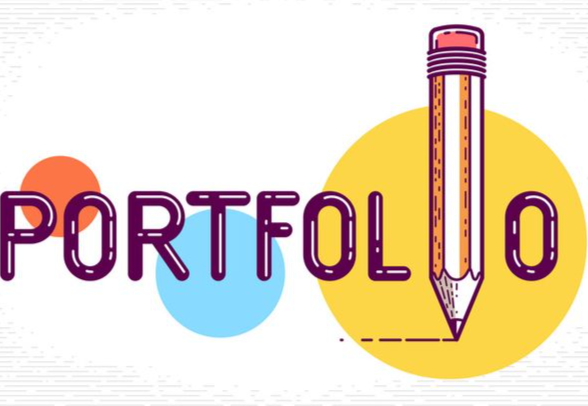What is a portfolio?
Have you ever heard the term “portfolio” and wondered what it really means? Whether you’re applying for a job, seeking admission to a university, or planning your investments, portfolios play a crucial role in showcasing your skills, achievements, and financial strategy. In this extensive guide, we will delve into the diverse facets of portfolios, emphasizing their significance and providing step-by-step guidance on their creation. Furthermore, we will provide valuable advice and strategies for effective management and presentation of portfolios. Our aim is to ensure that your portfolios make a lasting impression.
Portfolio
A portfolio is a curated collection of projects and programs that aligns investments with an organization’s strategic goals, enhancing both operational efficiency and overall benefits. Managed either at an organizational or functional level, portfolios prioritize resources to best serve strategic objectives, acting as a coordinating structure for projects and programs.
While projects and programs focus on delivering specific outputs, outcomes, and benefits, the portfolio framework ensures these efforts are effectively prioritised and aligned with overarching goals.
To shape a portfolio, sponsors and portfolio managers need visibility into plans for each project and program within it. They adjust and optimise these elements based on:
- The organisation’s ability to resource the portfolio effectively
- Shifts in strategic direction or the pace at which strategy should be implemented
In strategic portfolios, governance may fully integrate with corporate governance; when it does not, establishing executive support and understanding for prioritization is essential. Often, project sponsors may need to adjust or deprioritize individual projects in favor of the broader portfolio goals, maximizing value for the entire organization.

Importance of portfolios in applications
In various applications, whether academic or professional, portfolios are essential. They provide a structured way to present your work, skills, and accomplishments, making it easier for reviewers to understand your capabilities. Universities and employers often require portfolios to assess your potential and fit for their programs or roles.
University of Greenwich – portfolios
At the University of Greenwich, portfolios are emphasised as a critical component of applications. They allow applicants to present their best work, demonstrating their abilities and readiness for academic challenges. A well-prepared portfolio can significantly enhance your application, making you stand out among other candidates.
Goldsmiths University – purpose of portfolios: why they are essential for applications
Goldsmiths University highlights the importance of application portfolios, stating that they provide a comprehensive view of an applicant’s skills, creativity, and achievements. Portfolios are crucial in arts, design, and media, where visual and practical evidence of your work speaks volumes.

Types of portfolios
Portfolios can vary widely depending on their purpose and the field they are intended for. Let’s explore some common types of portfolios and what they typically include.
What to include
When creating a portfolio, knowing what to include is essential to make it practical and relevant.
University of Greenwich – types of work to showcase
The University of Greenwich suggests including diverse work that best represents your skills and experiences. This might include projects, assignments, and any relevant extracurricular activities.
Open University – portfolio content: types of evidence to showcase your skills
According to the Open University, a good portfolio should contain various types of evidence, such as written reports, designs, projects, and other work showcasing your competencies. Including detailed descriptions and reflections on your job can also be beneficial.
Goldsmiths University – content guidelines: what to include in your portfolio
Goldsmiths University recommends including a selection of your best and most relevant work. This might include sketches, prototypes, final projects, and other materials demonstrating your process and outcomes. Tailoring your portfolio to the application’s specific requirements is also essential.
Creating a portfolio
Building a portfolio involves several key steps, from gathering your work to organising it coherently and visually appealingly.
Morningstar – creating a portfolio: steps to set up your investment portfolio
To craft an effective investment portfolio, Morningstar suggests beginning with a comprehensive understanding of your financial objectives. Determine the kinds of assets you wish to incorporate, ensuring diversification within your portfolio to minimize risk. Regularly evaluate your portfolio’s performance to ensure alignment with your long-term goals.
Yahoo Finance – building a portfolio: key steps and considerations
Yahoo Finance highlights the importance of research and planning in building a portfolio. When making investment decisions, it is imperative to select options that align with your risk tolerance and financial aspirations. Diversifying your portfolio and engaging in regular monitoring are vital elements for achieving long-term investment success.
Hargreaves Lansdown – building a portfolio: introduction and importance of a well-structured portfolio
Hargreaves Lansdown emphasises the importance of a well-structured portfolio. Start by setting clear objectives, then select investments that match your goals and risk profile. To maintain alignment with your financial objectives, periodically assess and modify your investment portfolio.
Digital vs physical portfolios
In today’s digital age, portfolios can be created and presented in digital and physical formats. Each has its advantages and considerations.
University of Greenwich – digital portfolios: benefits and tips for creating online portfolios
Digital portfolios offer numerous benefits, including ease of access and the ability to include multimedia elements. The University of Greenwich recommends using online platforms to showcase your work, making it easily shareable and accessible to a broader audience.
Goldsmiths University – digital vs physical: choosing the correct format for your portfolio
Goldsmiths University discusses the pros and cons of digital and physical portfolios. Digital portfolios are versatile and easily updated, while physical portfolios can provide a tangible experience that some reviewers may prefer. When choosing the format, consider your audience and the nature of your work.
Open University – online presence: leveraging digital platforms
The Open University advises leveraging digital platforms to enhance your online presence. Platforms like LinkedIn, personal websites, and online portfolios can help you showcase your work to a broader audience and make it easier for potential employers or academic institutions to find and assess your capabilities.
Managing and presenting portfolios
Effective portfolio management and presentation are crucial to making a strong impression.
Portfolio management
Managing a portfolio involves several processes, from selecting and prioritising work to ensuring it aligns with your strategic goals.
APM – definition and importance: overview of portfolio management
At its core, APM views portfolio management as a centralized approach to managing projects and programs, with the ultimate goal of achieving strategic objectives. It’s crucial to ensure that your portfolio aligns with organisational or personal goals and maximises value.
APM – core components: projects, programs, and portfolios
APM outlines portfolio management’s core components, including managing individual projects, programs, and the overall portfolio. This approach helps prioritise and allocate resources effectively.
APM – management processes: selection, prioritisation, and control
Effective portfolio management involves selecting the right projects, prioritising them strategically, and controlling their progress. This ensures that resources are used efficiently and goals are met.
APM – strategic alignment: ensuring projects align with organisational strategy
Strategic alignment ensures that all projects and programs within a portfolio contribute to the organisation’s overarching goals. This helps in achieving long-term success and sustainability.
APM – benefits and challenges: maximising value and managing risks
While portfolio management offers numerous benefits, such as maximising value and improving resource allocation, it also comes with challenges. Managing risks, adapting to changes, and aligning with strategic goals are critical for success.
Presentation tips
How you present your portfolio can significantly impact its effectiveness.
University of Greenwich – presentation tips: how to arrange and present your portfolio
The University of Greenwich suggests arranging your portfolio logically and visually appealingly. Use clear headings, concise descriptions, and high-quality images to make a strong impression.
Goldsmiths University – presentation tips: practical ways to present your work
Goldsmiths University recommends practising your presentation skills to communicate your portfolio’s value effectively. Be prepared to discuss your work in detail, highlighting your skills, achievements, and projects’ impact.
Monitoring and adjusting
Keeping your portfolio up-to-date and relevant is essential for maintaining its effectiveness.
Morningstar – monitoring performance: tracking and analysing portfolio performance
Morningstar advises regularly monitoring and analysing your investment portfolio’s performance. This helps you make informed decisions and adjust your holdings to optimise returns.
Morningstar – adjusting holdings: making informed decisions on buying and selling
Adjusting your portfolio involves making informed decisions on buying and selling assets. Regular reviews and performance tracking can help you identify opportunities and mitigate risks.
Yahoo Finance – tracking tools: utilising Yahoo Finance tools to monitor your portfolio
At Yahoo Finance, you’ll find an array of tools to keep tabs on your portfolio. These tools provide crucial insights into your investments, empowering you to make well-informed, data-driven decisions while staying abreast of market fluctuations.
Hargreaves Lansdown – periodic review: the importance of regularly reviewing and adjusting your portfolio
Hargreaves Lansdown emphasizes the importance of periodic reviews to ensure your portfolio remains aligned with your goals. Regular adjustments help you adapt to market changes and maintain a balanced investment strategy.

Advanced features
Utilising advanced tools and resources can enhance your portfolio management.
Morningstar – advanced features: utilising additional tools and resources for portfolio management
Morningstar offers advanced features and tools to help you manage your portfolio more effectively. These resources provide in-depth analysis and insights to support your investment decisions.
Hargreaves Lansdown – tools and resources: utilising Hargreaves Lansdown’s resources for portfolio building
Hargreaves Lansdown provides various tools and resources to assist with portfolio building and management. Leveraging these can help you create a robust and diversified portfolio.
Using portfolios in applications
Portfolios can be critical in applications, from job interviews to academic submissions.
Interview tips
Discussing your portfolio effectively during interviews can leave a lasting impression.
University of Greenwich – interview tips: how to discuss your portfolio during an interview
The University of Greenwich suggests preparing thoroughly to discuss your portfolio in interviews. Be ready to explain the rationale behind your work, the skills you’ve demonstrated, and the outcomes of your projects.
Application Integration
Integrating your portfolio into applications can enhance your chances of success.
Open University – application integration: how to use your portfolio in job applications
The Open University advises incorporating your portfolio into your job applications to provide a comprehensive view of your capabilities. Tailor your portfolio to highlight the skills and experiences most relevant to the position.
Goldsmiths University – assessment criteria: what reviewers are looking for
Goldsmiths University outlines the assessment criteria reviewers use to evaluate portfolios. Focus on showcasing your strengths, creativity, and the relevance of your work to the application requirements.
How to maximise your profile or portfolio?
To make the most of your portfolio, share it widely on social media platforms like Instagram, Facebook, and LinkedIn, and include it on your CV for job applications. Many job sites allow CV uploads that employers can view, and you can also send your CV directly to potential employers.
Keep in mind that some industries encourage speculative applications, while others prefer to receive CVs or portfolios only when specific roles are advertised.
In sectors like psychology, for instance, there are professional bodies and websites where practitioners can promote their services, list their specialties, and provide contact details.
Remember, your career journey evolves over time. Regularly review and update your profile or portfolio to showcase your continuous professional development (CPD) and keep it relevant to your current skills and accomplishments.

FAQs
What should I include in my portfolio?
When creating your portfolio, focus on including your best and most pertinent work. The content should vary based on your field, but may incorporate projects, reports, designs, or other materials that demonstrate your skills and accomplishments. Tailor the portfolio’s contents to align with the specific requirements of the application or role you are pursuing.
How often should I update my portfolio?
It’s essential to keep your portfolio up-to-date by regularly adding new work and removing outdated content. Aim to review and update your portfolio at least once a year or whenever you complete significant projects.
Is a digital portfolio better than a physical one?
Both digital and physical portfolios have their advantages. Digital portfolios are easily accessible and include multimedia elements, while physical portfolios provide a tangible experience. Choose the format that best suits your audience and the nature of your work.
How can I make my portfolio stand out?
To make your portfolio shine, showcase standout projects in a visually captivating and organized manner. Provide detailed descriptions and personal reflections on each project, aligning your content with the specific application or role you seek.
What tools can I use to monitor my investment portfolio?
Several tools, such as Yahoo Finance, Morningstar, and Hargreaves Lansdown, are available to help you monitor your investment portfolio. These tools provide valuable insights into your investments, helping you make informed decisions and optimize your portfolio’s performance.


